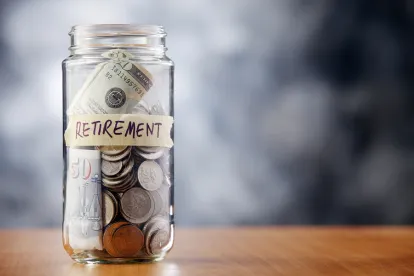Under the final rule published by the US Department of Labor on May 21, 2020, retirement plan administrators can choose to deliver required disclosures electronically by complying with the conditions of a new safe harbor. The final rule represents an opportunity for retirement plans to save costs and enhance participant access to disclosure documents.
IN DEPTH
Finishing an initiative to expand use of electronic media that began in 2018, the US Department of Labor (DOL) announced on May 21, 2020, publication of a final rule aimed at reducing burdens and costs associated with delivery of retirement plan disclosures required by the Employee Retirement Income Security Act (ERISA). The DOL final rule responds to an Executive Order calling for improved effectiveness and reduced cost of retirement plan disclosures, and is accompanied by a fact sheet and news release.
Retirement plan administrators must deliver required disclosures using methods that are reasonably calculated to ensure actual receipt of documents by participants and other recipients. The final rule, which describes a new voluntary safe harbor, permits electronic delivery of required disclosures using a “notice-and-access” method or via email. The notice-and-access method requires posting disclosures on a website and participant notice as described below. While the final rule emphasizes electronic delivery, participants can globally opt out of electronic delivery and receive paper copies of all disclosures. The safe harbor described in the final rule is expected to reduce costs while expanding participants’ access to disclosure documents through online and mobile-based technology. The rule does not apply to health and welfare plans.
Electronic Disclosure Under the New Safe Harbor
While retaining a 2002 safe harbor for electronic disclosures, the new safe harbor allows retirement plan disclosures to be posted on an internet website if certain requirements are met. The new safe harbor applies to certain information and documents that are required to be furnished (other than only upon request) to “covered individuals.” A covered individual is a participant, beneficiary or other individual entitled to plan documents who is assigned an electronic address for employment-related purposes or who furnishes an electronic address to the employer, plan administrator or plan sponsor. An electronic address could include, for example, a phone number for a smartphone or an email address. Following a participant’s severance from employment, the plan administrator must take steps to confirm whether the participant’s electronic address remains valid.
To satisfy the safe harbor, participants and other covered individuals must receive both of the following:
1.An initial paper notice stating that some or all disclosure documents will be furnished electronically to an electronic address, describing the right to opt out of electronic disclosure and meeting several content requirements
2.For each disclosure posted on an internet website, an electronic notice of internet availability (NOIA) with a brief description of the document(s), instructions on how to access information on the website and other prescribed contents.
Certain disclosures can be listed in a combined annual NOIA. A combined annual NOIA can notify participants of the delivery of summary plan descriptions and documents that are furnished annually. To satisfy the safe harbor, documents that are not furnished annually (such as quarterly benefit statements) must be accompanied by a separate NOIA.
Furnishing the NOIA
In addition to an annual NOIA, a NOIA must be provided to covered individuals each time a disclosure is made available on an internet website. A NOIA may be delivered to electronic addresses using a variety of technologies, including by email or text message. A “website” that hosts retirement plan disclosures may be an internet website or other internet or electronic-based repository, such as a mobile application. The system for furnishing a NOIA must alert the plan administrator of invalid addresses so that corrective action can be taken.
Additional Safe Harbor Requirements
The safe harbor also includes a minimum duration requirement (at least one year) applicable to documents posted on an internet website. A document that is superseded can be replaced by the subsequent version after one year. Several requirements apply to the maintenance of an internet website for retirement plan disclosures. Those requirements address the availability of documents, searchability, confidentiality and understandability of contents, among other things.
Alternative Method for Email Disclosure
Instead of posting disclosure documents on an internet website and furnishing participants with a NOIA, plan administrators may choose to send an email to a covered individual that includes the disclosure in the body of the email or as an attachment. The email must satisfy several content requirements, including a brief description of the document and a statement of the right to request a paper copy.
Preservation of Prior Disclosure Rules
The DOL previously issued rules and guidance regarding electronic delivery of disclosures required by ERISA. Under prior DOL guidance, acceptable delivery methods for these documents includes hand delivery, first class mail, or electronic delivery under a 2002 safe harbor for participants with access to electronic media at work or who consent to electronic delivery. The new safe harbor is in addition to DOL’s prior disclosure rules, including the 2002 safe harbor.
Temporary Relief During COVID-19 National Emergency
In ERISA Disaster Relief Notice 2020-01 (summarized in our On the Subject), the DOL announced an extension of deadlines for furnishing required notices to participants, beneficiaries and other persons, so that plan fiduciaries and plan sponsors have additional time to meet their obligations under ERISA during the Coronavirus (COVID-19) outbreak. Until 60 days after the end of the COVID-19 national emergency, plan fiduciaries won’t be responsible for delays in furnishing documents, notices and disclosures if fiduciaries act in good faith and furnish the information as soon as administratively practicable under the circumstances. Good faith includes use of electronic communications if a fiduciary reasonably believes participants and beneficiaries have effective access, including email, text messages and websites. This relief was also made available to disclosures for health and welfare plans (see our On the Subject).
Interaction with Other Disclosure Rules
Both ERISA and the Internal Revenue Code require delivery of notices, disclosures and other documents to participants and beneficiaries. The Internal Revenue Service (IRS) and DOL have each promulgated regulations on electronic disclosure of retirement plan information. The IRS regulations do not apply to disclosures regulated by the DOL, and vice versa. While the DOL rules do not govern disclosures regulated by the IRS, supplementary information accompanying the final rule says that the US Department of the Treasury and the IRS intend to issue additional guidance on electronic delivery of participant notices.
Next Steps
The final rule will become effective on July 27, 2020, but the DOL will not take enforcement action if plan administrators start to use the new safe harbor before that date.
For retirement plans, the final rule represents an opportunity for cost savings and enhanced participant access to disclosure documents. The new safe harbor may be a more efficient method for information delivery compared to the method currently used. Considering that the new safe harbor may reduce plan costs and benefit participants, plan administrators should review this new safe harbor and consider its suitability. Because the final rule does not apply to ERISA-required notices for health and welfare plans, plan sponsors that adopt the new safe harbor will be required to use different disclosure methods for their various benefit plans.





 />i
/>i

